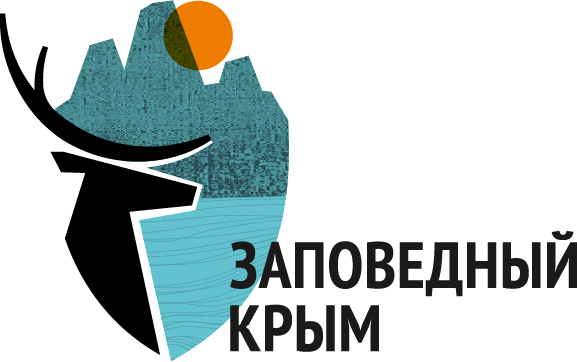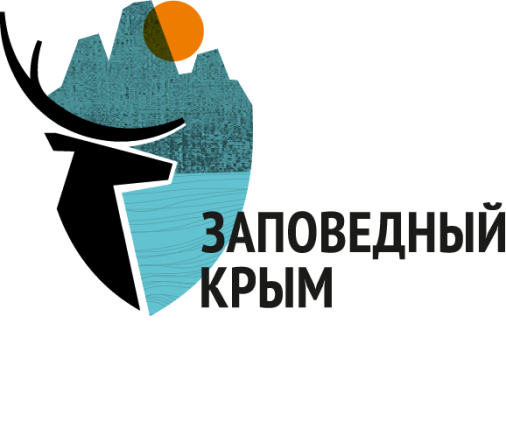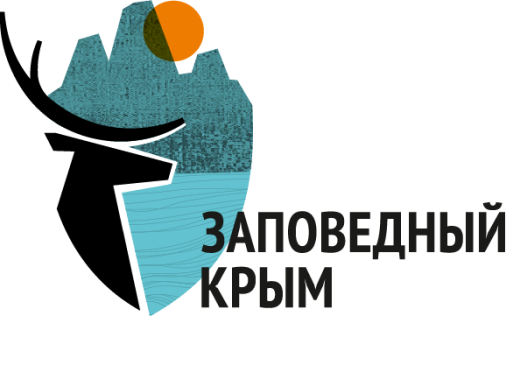

FAUNA
The nature reserve is inhabited by lepidopterians (422 species), spiders (147), Hymenoptera (146), beetles (97), fishes (62), reptiles (6), amphibians (2), birds (168) and mammals (27).
Some groups are not studied yet, and when they will be, the lists of species will be much longer.
The nature reserve’s water area is of extremely high importance for waterbirds, spawn and growing period of many bottom and pelagic fishes, including rare and endangered. The coastal aquatic complex of the cape is a wetland of international importance (Ramsar site).
Some groups are not studied yet, and when they will be, the lists of species will be much longer.
The nature reserve’s water area is of extremely high importance for waterbirds, spawn and growing period of many bottom and pelagic fishes, including rare and endangered. The coastal aquatic complex of the cape is a wetland of international importance (Ramsar site).
1278 animal species are known as the inhabitants of the nature reserve. 169 (13,6%) of them are rare and endangered.
1278 animal species are known as the inhabitants of the nature reserve. 169 (13,6%) of them are rare and endangered.
The nature reserve is inhabited by lepidopterians (422 species), spiders (147), Hymenoptera (146), beetles (97), fishes (62), reptiles (6), amphibians (2), birds (168) and mammals (27).
Some groups are not studied yet, and when they will be, the lists of species will be much longer.
The nature reserve’s water area is of extremely high importance for waterbirds, spawn and growing period of many bottom and pelagic fishes, including rare and endangered. The coastal aquatic complex of the cape is a wetland of international importance (Ramsar site).
Some groups are not studied yet, and when they will be, the lists of species will be much longer.
The nature reserve’s water area is of extremely high importance for waterbirds, spawn and growing period of many bottom and pelagic fishes, including rare and endangered. The coastal aquatic complex of the cape is a wetland of international importance (Ramsar site).
Mammals
27 species
The biggest groups are:
The biggest groups are:
- rodents: 9 species;
- bats: 8 species;
- predators: 4 species
Mammals
27 species
The biggest groups are:
The biggest groups are:
- rodents: 9 species;
- bats: 8 species;
- predators: 4 species
Rare
14 species, 3 of them are under protection of five or more lists of endangered species: Rhinolophus ferrumequinum, Tursiops truncatus and Phocana phocana relicta.
14 species, 3 of them are under protection of five or more lists of endangered species: Rhinolophus ferrumequinum, Tursiops truncatus and Phocana phocana relicta.
Rare
14 species, 3 of them are under protection of five or more lists of endangered species: Rhinolophus ferrumequinum, Tursiops truncatus and Phocana phocana relicta.
14 species, 3 of them are under protection of five or more lists of endangered species: Rhinolophus ferrumequinum, Tursiops truncatus and Phocana phocana relicta.
Birds
- 39 species nest at the coast, in steppes and forests;
- about 100 species migrate through the nature reserve in spring and autumn;
- at least 40 species inhabit the nature reserve in winter.
Rare: 65 species, 8 of them are in Red Data Books.
Birds
- 39 species nest at the coast, in steppes and forests;
- about 100 species migrate through the nature reserve in spring and autumn;
- at least 40 species inhabit the nature reserve in winter.
Rare: 65 species, 8 of them are in Red Data Books.
Reptiles and amphibians
Pseudopus apodus, Dolichophis caspius and Elaphe sauromates are three reptile species of the nature reserve that are included in the Red Data book of the Republic of Crimea. Natrix tessellata is the most populous reptile species.
In the nature reserve there are two amphibian species: Bufo viridis and Pelophylax cf. bedriagae.
In the nature reserve there are two amphibian species: Bufo viridis and Pelophylax cf. bedriagae.
Reptiles and amphibians
Pseudopus apodus, Dolichophis caspius and Elaphe sauromates are three reptile species of the nature reserve that are included in the Red Data book of the Republic of Crimea. Natrix tessellata is the most populous reptile species.
In the nature reserve there are two amphibian species: Bufo viridis and Pelophylax cf. bedriagae.
In the nature reserve there are two amphibian species: Bufo viridis and Pelophylax cf. bedriagae.

Fishes
The sea’s bottom is inhabited by mollusca (11 species), crustaceans (24 species) and worms. Alitta succinea is the most populous worm (marine annelid).
The nature reserve’s water area is home to 62 fish species. At the seashore you can find Belone belone euxini, Hippocampus hippocampus, Trachurus mediterraneus ponticus, Mullus barbatus ponticus, Platichthys flesus luscus, and 11 goby species native to the Sea of Azov.
Huso huso is included in the Red Data Book of Russia.
The nature reserve’s water area is home to 62 fish species. At the seashore you can find Belone belone euxini, Hippocampus hippocampus, Trachurus mediterraneus ponticus, Mullus barbatus ponticus, Platichthys flesus luscus, and 11 goby species native to the Sea of Azov.
Huso huso is included in the Red Data Book of Russia.
Fishes
The sea's bottom is inhabited by mollusca (11 species), crustaceans (24 species) and worms. Alitta succinea is the most populous worm (marine annelid).
The nature reserve's water area is home to 62 fish species. At the seashore you can find Belone belone euxini, Hippocampus hippocampus, Trachurus mediterraneus ponticus, Mullus barbatus ponticus, Platichthys flesus luscus, and 11 goby species native to the Sea of Azov.
Huso huso is included in the Red Data Book of Russia.
The nature reserve's water area is home to 62 fish species. At the seashore you can find Belone belone euxini, Hippocampus hippocampus, Trachurus mediterraneus ponticus, Mullus barbatus ponticus, Platichthys flesus luscus, and 11 goby species native to the Sea of Azov.
Huso huso is included in the Red Data Book of Russia.
The Azov Sea is highly productive. Copepods, water fleas, rotifers, and marine ciliates live in the upper layer of water. Among the coelenterates is the Black Sea merisia, which reproduces by budding.
The Azov Sea is highly productive. Copepods, water fleas, rotifers, and marine ciliates live in the upper layer of water. Among the coelenterates is the Black Sea merisia, which reproduces by budding.
Insects and spiders
The diversity of insect species is high in the nature reserve. In the open areas of the reserve, there are frequent steppe duck (the largest grasshopper in Europe) and praying mantises: short-winged bolivaria and striped empusa. A large centipede (ringed centipede) lives under the stones.
147 arachnid species are found in the nature reserve. Tarantula, karakurt, cross spider, wasp spider, patison spider and lynx spider are often found. A sidewalk spider is hiding in the flowers.
147 arachnid species are found in the nature reserve. Tarantula, karakurt, cross spider, wasp spider, patison spider and lynx spider are often found. A sidewalk spider is hiding in the flowers.
Butterflies flutter over the flowers: the merry motley moth, the Ballion silkworm, the silvery hood, the swallowtail, the podaliry, the Pandora mother-of-pearl and the bluefly. There are 422 butterfly species in the nature reserve.
The trails of the nature reserve are dotted with ant lion trap funnels. Dung beetles, fireflies, gold beetles, leaf beetles and a number of bugs can be found more often than other beetle species. In every part of the territory you can hear the chirping and buzzing of grasshoppers, crickets, cicadas, bees.
In early summer, at dusk, a large nocturnal peacock eye (Saturnia) files out of its shelter. It is the largest butterfly in Europe with the wingspan of 13 cm. Eight species of butterflies found in the reserve have become new to the Crimean fauna, and the species Alucita araxella Zag has become new to the fauna of Europe.
9 butterfly species are in the Red Data Book of the Republic of Crimea.
9 butterfly species are in the Red Data Book of the Republic of Crimea.
Photos used on this site belong to (photo credits): S. Ledenkov, I. Sikorsky, L. Moroz, V. Kostrov, N. Litvinyuk, D. Rutyanov, S. Alyomov, M. Atamanenko, G. Prokopov, D. Voinov, Y. Timofeev, Y. Shumlyaeva, M. Rozanov, V. Anzylov, V. Zyuzin, A. Gromov, Y. Zhuravleva, E. Nekadimova, N. Krymsky, K. Polyanskaya, A. Rybintsev, A. Mishin, A. Dmitrieva and naturerussia.travel
Photos used on this site belong to (photo credits): S. Ledenkov, I. Sikorsky, L. Moroz, V. Kostrov, N. Litvinyuk, D. Rutyanov, S. Alyomov, M. Atamanenko, G. Prokopov, D. Voinov, Y. Timofeev, Y. Shumlyaeva, M. Rozanov, V. Anzylov, V. Zyuzin, A. Gromov, Y. Zhuravleva, E. Nekadimova, N. Krymsky, K. Polyanskaya, A. Rybintsev, A. Mishin, A. Dmitrieva and naturerussia.travel

Yalta Mountain-
Forest Nature Reserve
Forest Nature Reserve
Kazantyp
Nature Reserve
Nature Reserve
Opuksky
Nature Reserve
Nature Reserve
Islands
and Water Area
and Water Area
Contacts
298650, The Republic of Crimea, Yalta, Sovietskoe, Dolosskoe road, 2.
+7 365 423 30 50
+7 365 437 88 41
zapovedcrimea@mail.ru
+7 365 423 30 50
+7 365 437 88 41
zapovedcrimea@mail.ru
© Crimean Protected Areas
All rights reserved. Any copying from this site is prohibited without permission of the directorate.
All rights reserved. Any copying from this site is prohibited without permission of the directorate.
If you have an emergency, witnessed a fire, illegal dumping or other law violations, dial:
+7 365 423 30 50
+7 978 904 24 40 (hotline)
+7 978 901 56 70
(Deputy Ranger Service Director)
+7 365 423 30 50
+7 978 904 24 40 (hotline)
+7 978 901 56 70
(Deputy Ranger Service Director)





